Hotel breakfast buffets promise a tasty start to your day, but not all offerings deserve a spot on your plate. Some foods sit out too long, while others might upset your stomach and ruin your vacation plans.
Before loading up your plate tomorrow morning, check out these breakfast buffet items you should skip and others that might spoil your day.
1. Scrambled Eggs From The Warming Tray

Those yellow mounds have likely been sitting under heat lamps for hours. The texture turns rubbery and unappetizing as time passes.
Hotel scrambled eggs often come from powdered mixes rather than fresh eggs. This explains their odd flavor and consistency.
2. Room-Temperature Smoked Salmon
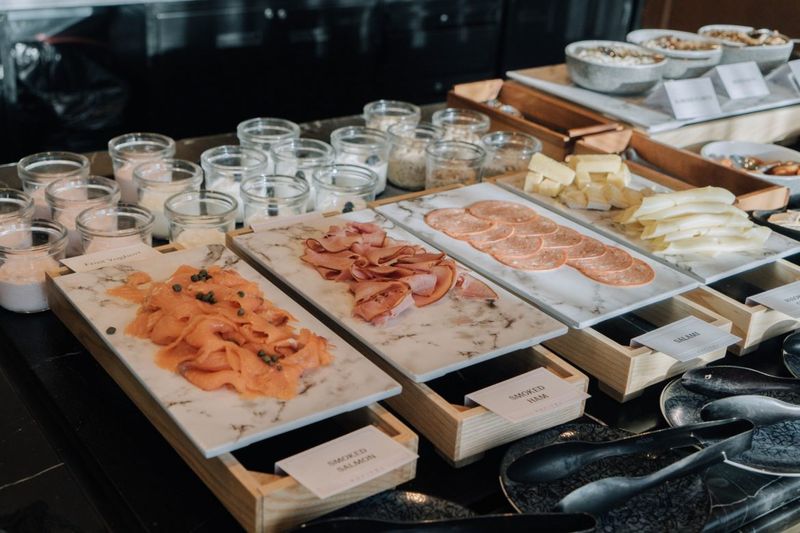
Delicate fish products require proper refrigeration. When salmon sits out on ice that’s melting away, bacteria multiply rapidly.
The pink color may look appealing, but room-temperature fish is a playground for foodborne illness. Your stomach will thank you for passing on this risky option.
3. Sausage Links That Look Dry

Breakfast sausages dry out quickly under heat lamps. The wrinkled, cracked exterior signals they’ve been sitting far too long.
Beyond the unpleasant texture, old sausages harbor bacteria that thrive in the danger zone between hot and cold. Fresh sausages should look plump and juicy.
4. Watery Fruit Salad

Ever noticed that pool of liquid at the bottom of the fruit bowl? That’s a sign of aging fruit that’s been cut hours ago.
As cut fruit sits, it loses nutrients and flavor. The soggy texture and diluted taste make for a disappointing start to your day.
5. Lukewarm Gravy

Gravy needs to stay piping hot to remain safe. When it cools to lukewarm temperatures, bacteria multiply quickly.
That skin forming on top? It’s a clear warning sign. The danger zone between 40°F and 140°F is where foodborne illnesses thrive, making tepid gravy a risky choice.
6. Pastries With Cream Fillings
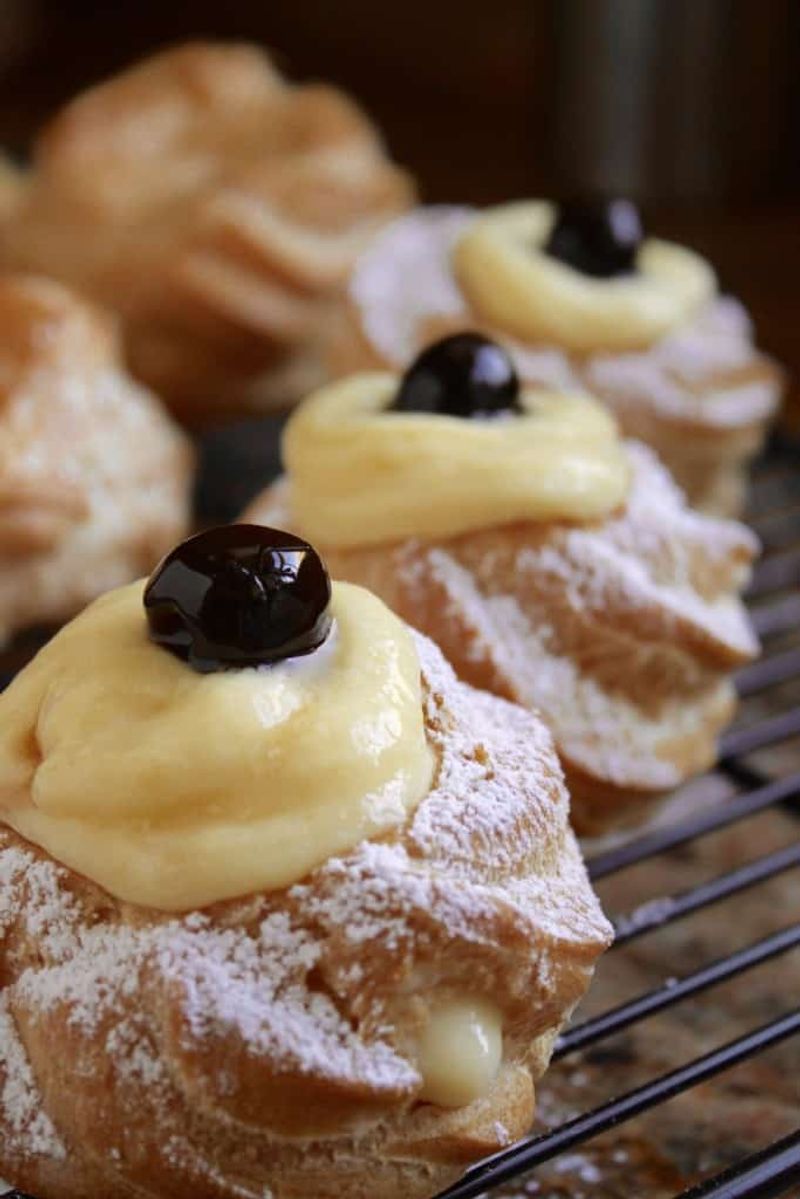
Those tempting cream-filled donuts and pastries harbor a secret danger. Dairy products spoil quickly at room temperature.
Custards and creams provide perfect growing conditions for bacteria when not properly refrigerated. The sweet taste might mask signs of spoilage until it’s too late.
7. Uncovered Bread Baskets

Open bread baskets invite more than just hungry guests. Every person reaching in transfers germs from their hands to the remaining pieces.
Without protective covers, bread also dries out quickly. Those crusty, stale slices sitting since early morning won’t make for tasty toast.
8. Undercooked Bacon
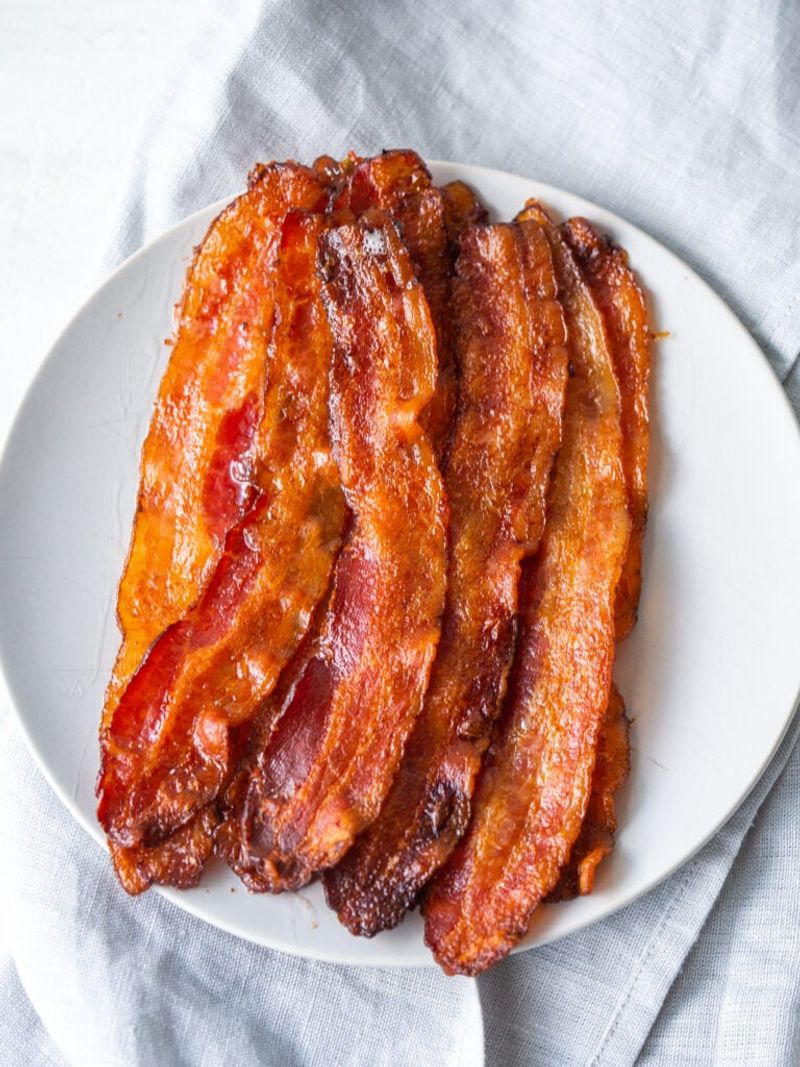
Floppy, pale bacon strips haven’t reached the safe temperature needed to kill harmful bacteria. Pork requires thorough cooking to eliminate parasites and pathogens.
Crispy, well-done bacon isn’t just tastier—it’s safer too. Skip those transparent, undercooked strips to avoid potential digestive distress later.
9. Mystery Meat Omelets
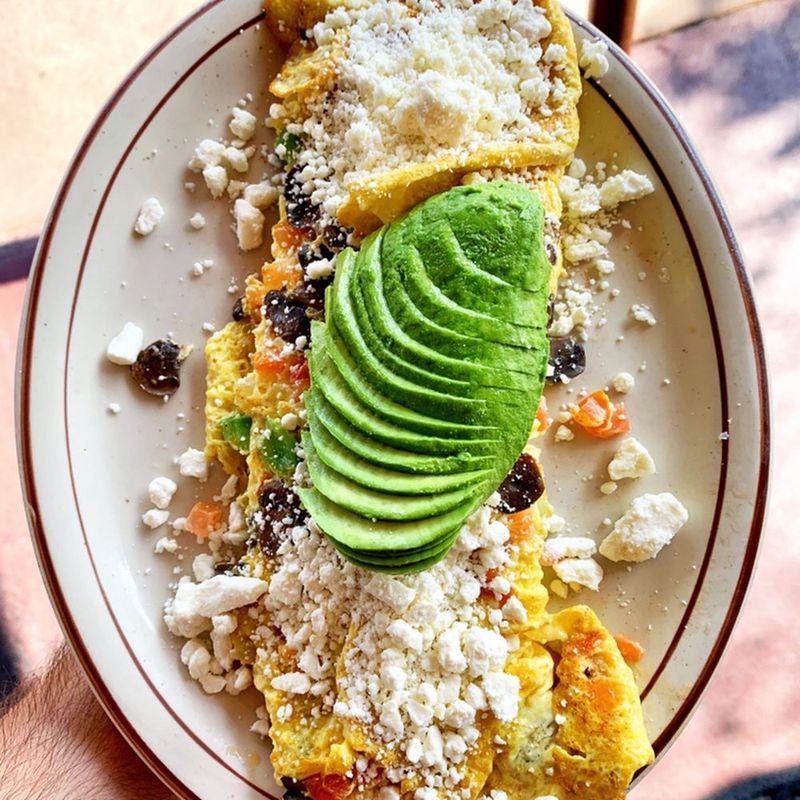
Pre-made omelets sitting in warming trays hide questionable fillings. You can’t verify the freshness of ingredients buried inside.
Those chunks might be yesterday’s leftover meat repurposed for breakfast. When you can’t identify what you’re eating, it’s safer to choose simpler options.
10. Soggy Belgian Waffles

Waffles turn from crispy to soggy within minutes under a heat lamp. The steam trapped under the cover creates a mushy texture that’s nothing like freshly made waffles.
Those sad, limp squares have likely been sitting for hours. Your waffle experience deserves better than a chewy disappointment.
11. Cloudy Orange Juice

Crystal-clear juice in large dispensers often contains more sugar than actual fruit. The cloudier natural juices should be refrigerated and consumed quickly.
If that orange juice looks separated or has been sitting out for hours, bacteria may already be multiplying. Fresh juice shouldn’t taste fizzy or fermented.
12. Warm Milk Products
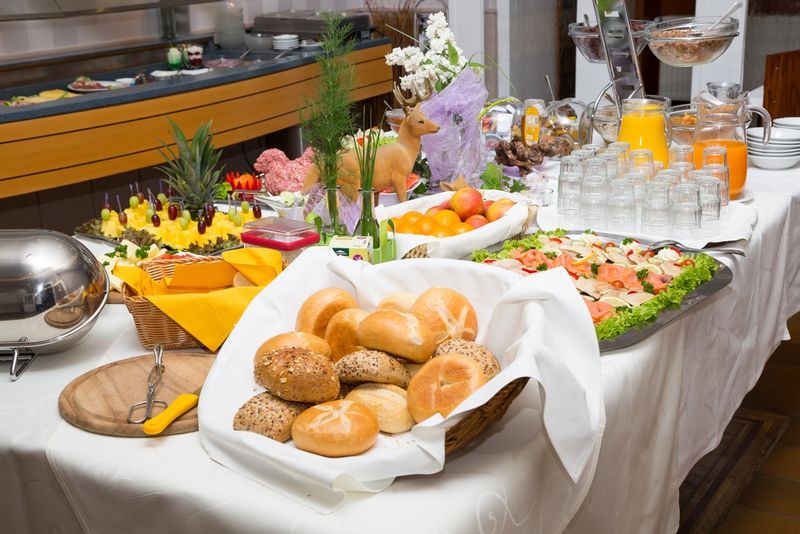
Dairy products require constant refrigeration. Milk, yogurt, and cream sitting at room temperature become bacterial breeding grounds.
That slightly sour smell? It’s the first warning sign. Even an hour in the danger zone temperature range makes dairy products unsafe for consumption.
13. Half-Empty Buffet Trays

Nearly empty trays signal food that’s been sitting out too long. Fresh items are typically replaced with full trays rather than topped off.
Those last few pancakes or hash browns have likely been drying out for hours. Better to wait for a fresh batch than risk the dried-out remnants.
14. Communal Butter Dishes
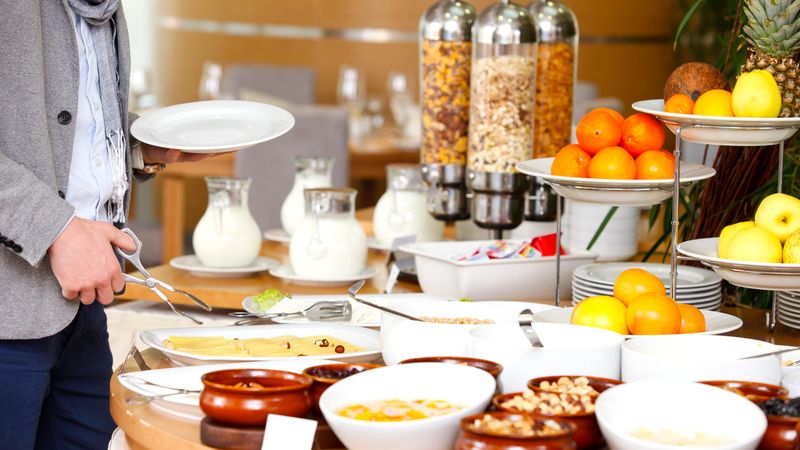
Open butter dishes collect germs from every knife that touches them. Watch people double-dip after spreading on toast, contaminating the entire dish.
Soft butter left unrefrigerated turns rancid quickly. Those little packaged portions might seem wasteful but are far safer than the shared tub.
15. Syrup In Reusable Containers
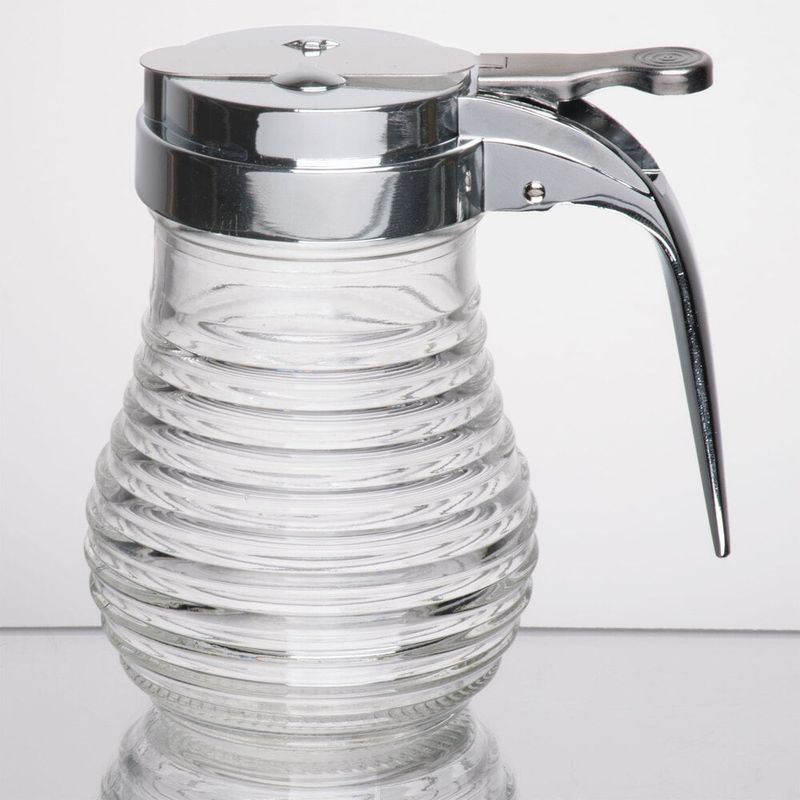
Sticky syrup bottles harbor germs on their surfaces. Every hand that touches that crusty cap transfers bacteria.
Staff rarely empty and thoroughly clean these containers between guests. The residue around the spout collects dust and germs while sitting out all morning.
16. Self-Serve Waffle Batter
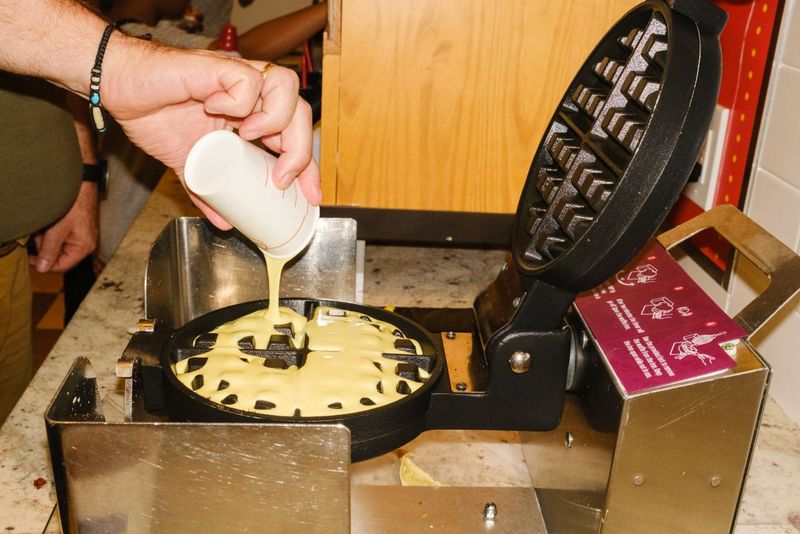
That waffle batter sitting at room temperature becomes a bacterial playground. Raw eggs in the mixture can cause foodborne illness when not properly refrigerated.
Watch how many hands touch the ladle throughout the morning. Each person transfers germs into the communal batter.
17. Sliced Tomatoes On Ice
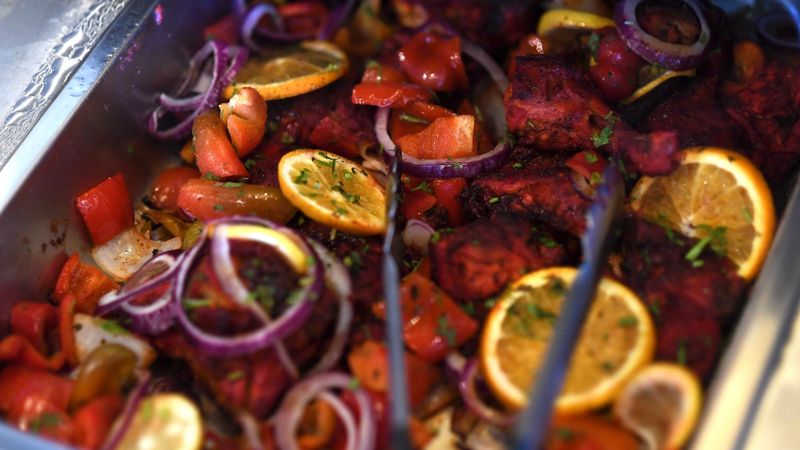
Tomato slices absorb bacteria more readily than whole vegetables. Their high water content makes them perfect breeding grounds for microbes.
As ice melts, those slices sit in water rather than on ice. The wet environment accelerates bacterial growth, especially in warm buffet areas.
18. Hot Foods In Cold Trays
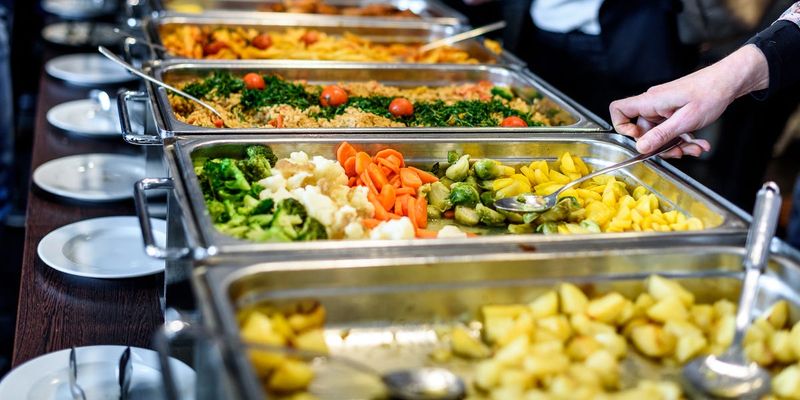
Breakfast items meant to be hot but sitting in lukewarm trays fall into the temperature danger zone. Foods like eggs, bacon, and sausage need to stay above 140°F to remain safe.
When steam stops rising and condensation forms on the lid, it’s a sign the heating element isn’t working properly.

